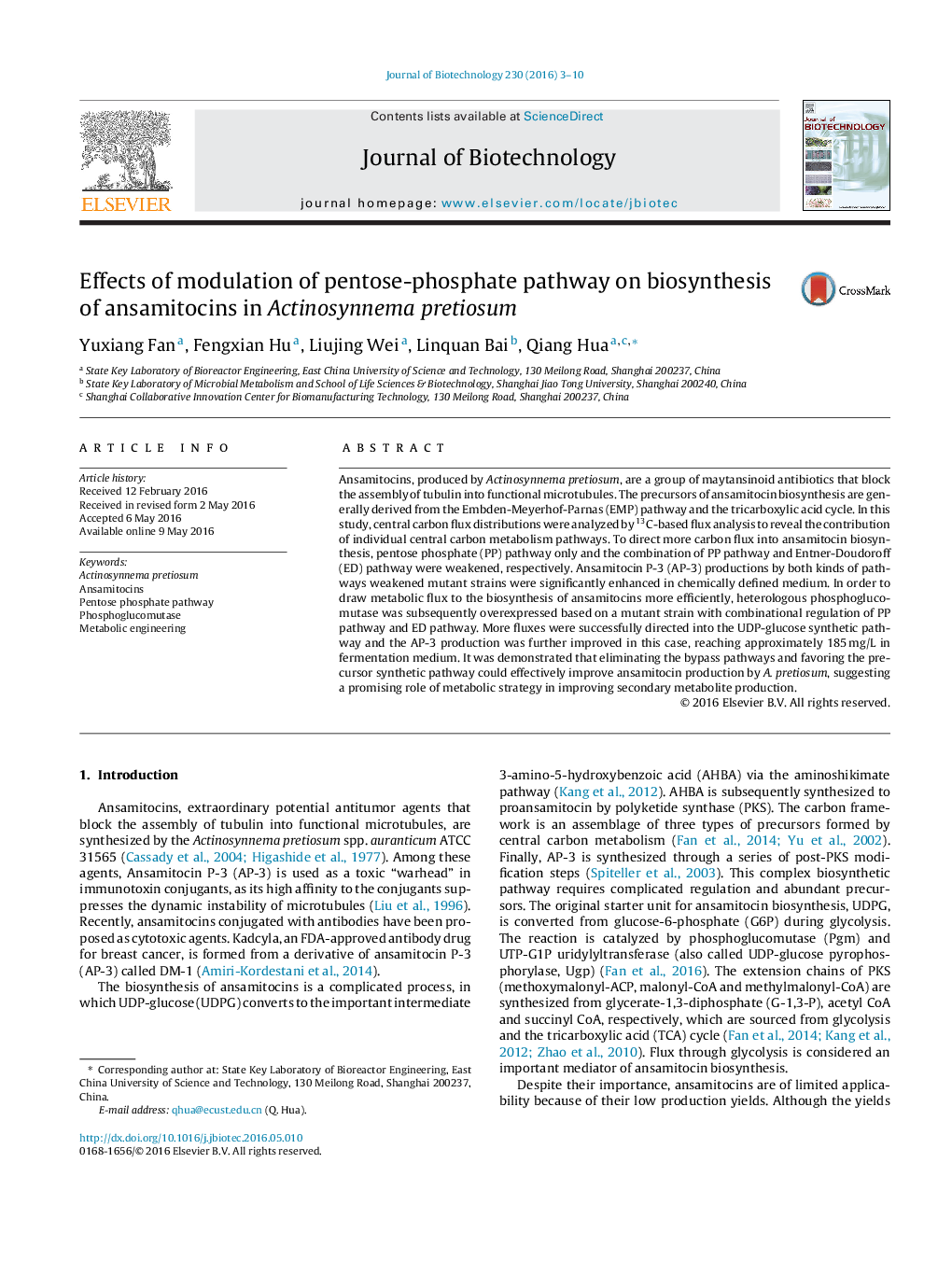| Article ID | Journal | Published Year | Pages | File Type |
|---|---|---|---|---|
| 22645 | Journal of Biotechnology | 2016 | 8 Pages |
•Central carbon flux distribution was successfully analyzed by 13C-based trace trial in Actinosynnema pretiosum.•Central carbon flux was successfully rearranged by modulating the pentose-phosphate pathway.•The final ansamitocin P-3 concentration increased approximately 30% in fermentation medium.•The result carried out in chemically defined medium could authentically reproduce in fermentation medium.
Ansamitocins, produced by Actinosynnema pretiosum, are a group of maytansinoid antibiotics that block the assembly of tubulin into functional microtubules. The precursors of ansamitocin biosynthesis are generally derived from the Embden-Meyerhof-Parnas (EMP) pathway and the tricarboxylic acid cycle. In this study, central carbon flux distributions were analyzed by 13C-based flux analysis to reveal the contribution of individual central carbon metabolism pathways. To direct more carbon flux into ansamitocin biosynthesis, pentose phosphate (PP) pathway only and the combination of PP pathway and Entner-Doudoroff (ED) pathway were weakened, respectively. Ansamitocin P-3 (AP-3) productions by both kinds of pathways weakened mutant strains were significantly enhanced in chemically defined medium. In order to draw metabolic flux to the biosynthesis of ansamitocins more efficiently, heterologous phosphoglucomutase was subsequently overexpressed based on a mutant strain with combinational regulation of PP pathway and ED pathway. More fluxes were successfully directed into the UDP-glucose synthetic pathway and the AP-3 production was further improved in this case, reaching approximately 185 mg/L in fermentation medium. It was demonstrated that eliminating the bypass pathways and favoring the precursor synthetic pathway could effectively improve ansamitocin production by A. pretiosum, suggesting a promising role of metabolic strategy in improving secondary metabolite production.
